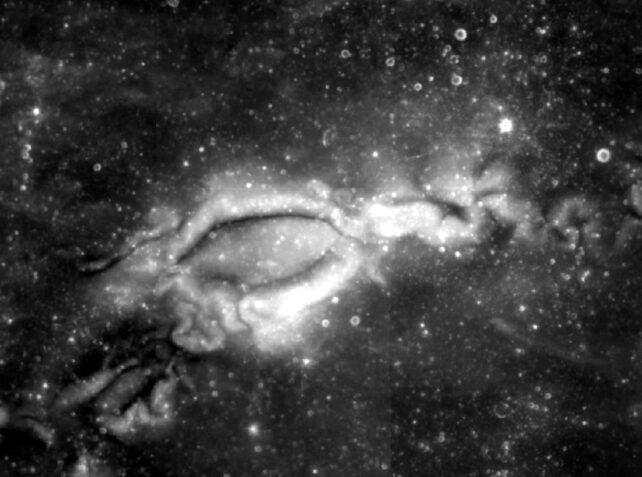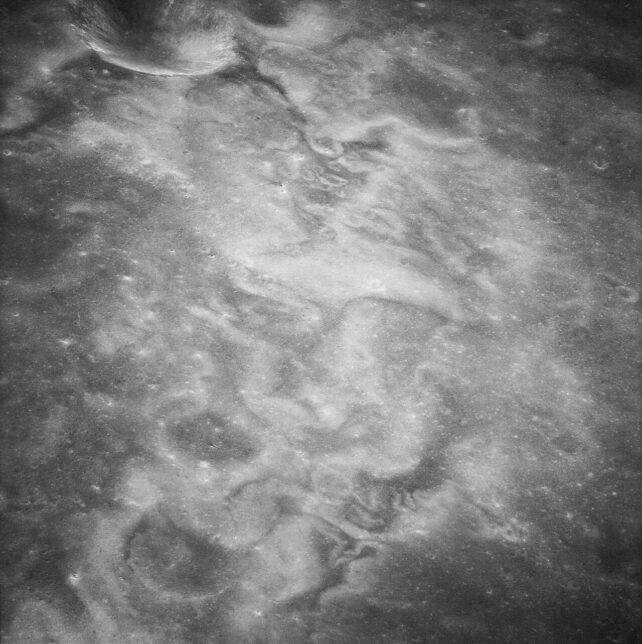The moon is known for its gray, pockmarked appearance. But did you know that if you point a telescope at a satellite next to our planet, you will also see bright spots on the lunar surface?
Since these strange phenomena, known as lunar whirls, were first noticed in the 17th century, scientists have wondered where they come from.
To this day, bright regions such as the famous Reiner Gamma vortex (pictured below) remain a mystery.

A new study from scientists at Stanford University and Washington University in St. Louis (WUSL) provides evidence for a new explanation.
Unlike planet Earth, the Moon no longer generates a global magnetic field to shield itself from the Sun’s charged particles. This means that when solar winds collide with the lunar surface, they darken the rocks over time through chemical reactions.
Yet some places on the Moon appear to be protected by mini-magnetic fields.
So far, every lightly shadowed lunar vortex that scientists have found coincides with one of these local magnetic fields. And yet not all rocks within them are reflective, and not all magnetic fields on the moon contain vortices.
What’s going on on Earth (or rather on the moon)?
A number of recent studies explain the confusing results by suggesting that micrometeor impacts on the moon can stir up charged dust particles. Where these particles land, a local magnetic field barrier is created and the solar winds are reflected.
But researchers from Stanford and WUSL are now challenging that hypothesis, arguing that another force has “magnetized” the lunar vortices, deflecting the solar wind particles.
“Implications could be “These magnetic anomalies could be the cause,” admits WUSL planetary scientist Michael Krawczynski.
“But there are also vortices where we’re not sure how an impact could create that shape and size.”
Krawczynski suggests that there could also be forces at work from beneath the crust. “Another theory is that you have lava underground, which is slowly cooling in a magnetic field and creating the magnetic anomaly.”


Just beneath the moon’s surface, scientists have found radar evidence of what was once molten rock. These underground rivers of cooled magma hint at a period of volcanic activity billions of years ago.
Using a model of these magma cooling rates, Krawczynski and his colleagues investigated how a titanium-iron oxide mineral called ilmenite – which is common on the moon and common in volcanic rocks – might have a magnetizing effect.
Their experiments show that under the right conditions, the slow cooling of ilmenite can cause grains of metallic iron and iron-nickel alloys to form in the Moon’s crust and upper mantle, creating a powerful magnetic field.
This effect, the researchers conclude, “could explain the strong magnetic regions associated with the Moon’s rotation.”
“If you want to make magnetic anomalies with the methods we describe, the subsurface magma has to contain a lot of titanium,” Krawczynski said.
“We’ve seen evidence that this reaction creates iron metal in lunar meteorites and in Apollo lunar samples. But all of those samples are surface lava flows, and our study shows that cooling underground should greatly enhance these metal-forming reactions.”
Much of what we know about the moon’s localized magnetic fields comes from spacecraft orbiting the moon, which can measure the effect using radar. But to really understand what’s happening, we need to drill directly into the lunar surface.
That’s exactly why NASA is sending a rover to the Reiner Gamma vortex in 2025 as part of their Lunar Vertex mission.
In a few years, scientists may be able to find the evidence they need to solve this mystery.
The research was published in the Journal for Geophysical Research: Planets.







